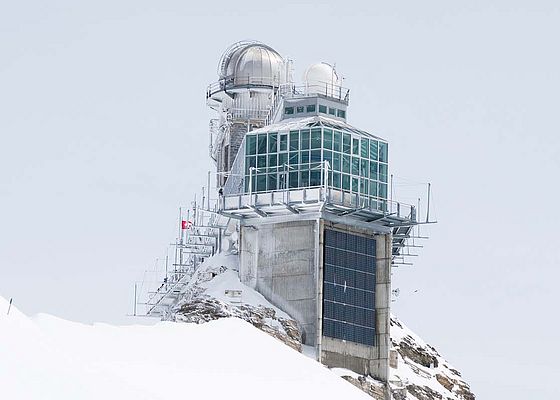Swiss Federal Laboratories for Materials Science and Technology (Empa) is using Axetris mass flow controllers (MFCs) in its research laboratory at the Jungfraujoch High Altitude Research Station, located at the “Top of Europe.” Axetris MFCs were chosen to fulfill the strict demands of repeatability and stability for enabling high-performance isotope tracking using laser spectroscopy.
CO2 isotope tracking to study climate change
The study of CO2 isotopes provides valuable information about the effects of CO2 generated due to human activities on climate change and global warming. Traditionally, various mass spectrometric techniques, such as Isotope Ratio Mass Spectrometry (IRMS), have been used to study CO2 isotopes in order to classify emission sources.
Since late 2008, Empa has been operating an isotope spectrometer, based on a quantum cascade laser (QCL), at the high-altitude research station located on Jungfraujoch in the Bernese Oberland region of Switzerland. The research station is situated on the famous Swiss peak at an altitude of 3580 msl, at the so-called “Sphinx Observatory.”
A variety of technical improvements for advancing measurement performance
Since 2007, Empa has worked continuously to develop and validate the innovative trace gas measurement setup. A number of improvements have been made over the years, so that the measurement performance of the setup could be drastically enhanced. Improvements in gas sampling and handling for the device resulted in better overall precision. Thermal control of sample and calibration gases played an important role in advancing the measurement performance.
One critical challenge to increase measurement performance was to maintain constant pressure in the reference and sample cells. Maintaining a constant pressure allows minimizing pressure effects, which may lead to spectroscopic noise. At the same time, a repeatable and stable gas flow control was required for purging the optics, and for stepwise dilution of reference gas samples to provide accurate values on internationally established scales for CO2 isotope ratios. Clearly, a mass flow control solution was required, which would not only deliver exceptionally high repeatability and dynamic range (for use with different flow rates), but also deliver long-term control stability under harsh environmental conditions.























































